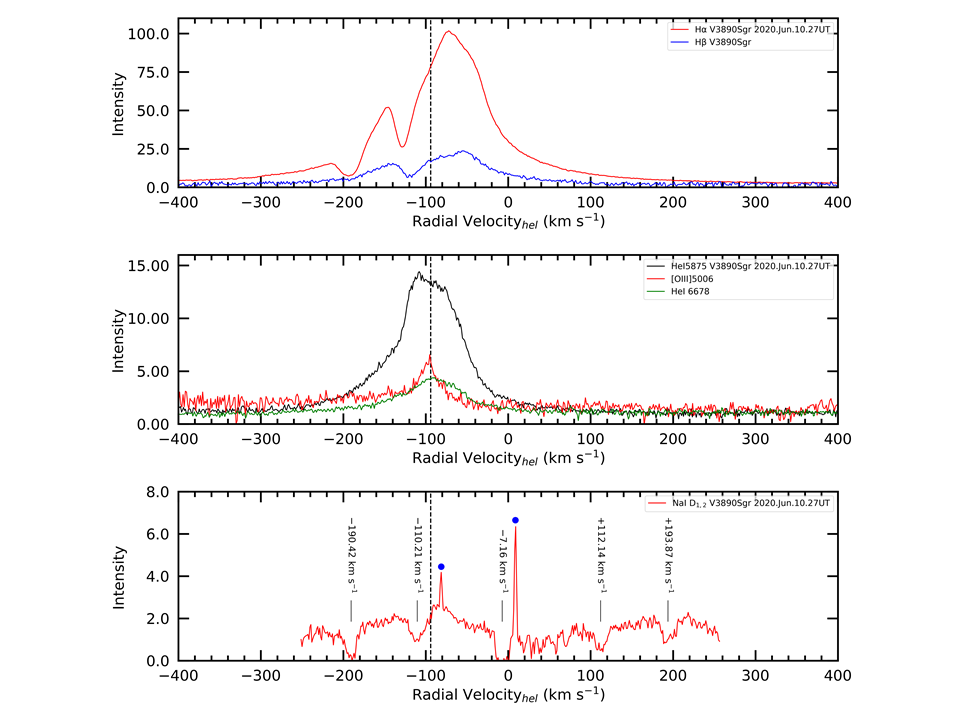We present an analysis of the red giant component of the recurrent nova V3890 Sgr, using data obtained before and after its 2019 eruption. Its effective temperature is Teff = 3050 ± 200 K for log g = 0.7, although there are modest changes in Teff. There is an overabundance of both carbon (0.20 ± 0.05 dex) and sodium (1.0 ± 0.3 dex) relative to their solar values, possibly the result of ejecta from the 1990 nova eruption being entrained into the red giant photosphere. We find 12C/13C =25 ± 2, a value similar to that found in red giants in other recurrent novae. The spectrum in the region of the Na I D lines is complex, and includes at least six interstellar components, together with likely evidence for interaction between ejecta from the 2019 eruption and material accumulated in the plane of the binary.

Read more: Kaminsky et al. 2022, MNRAS, 517, 6064
